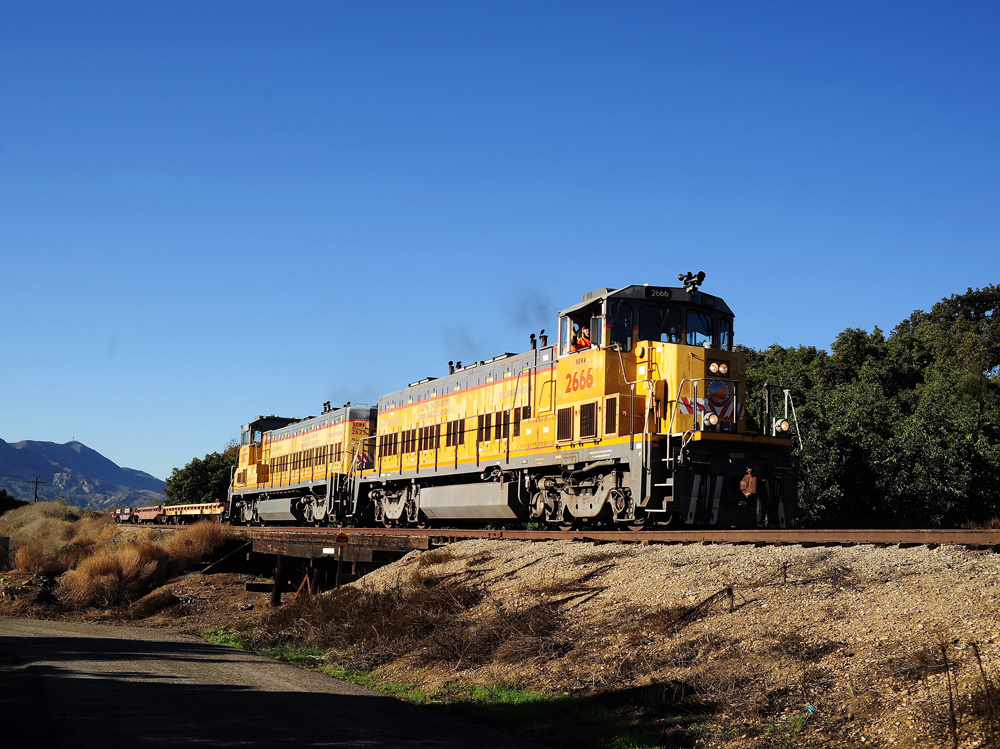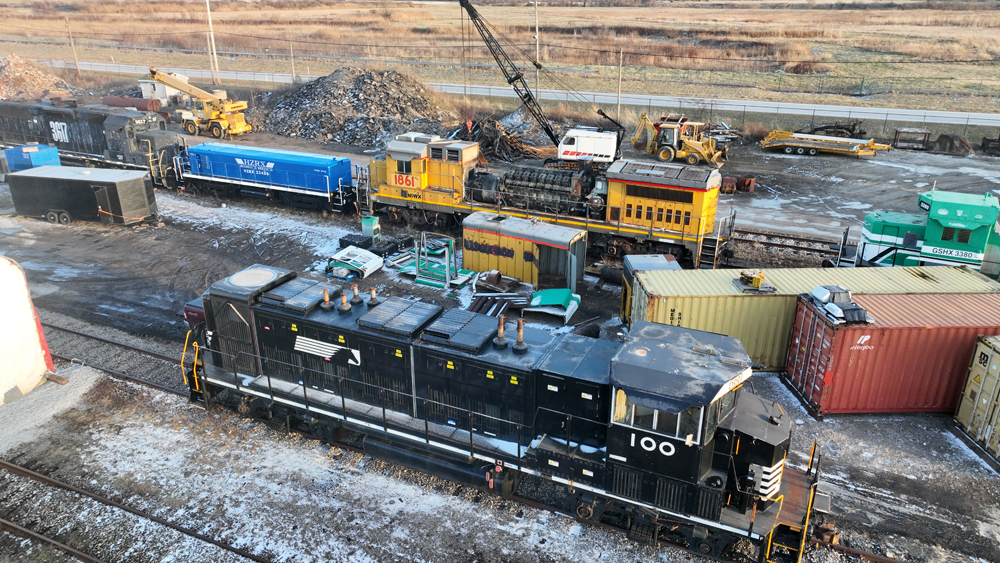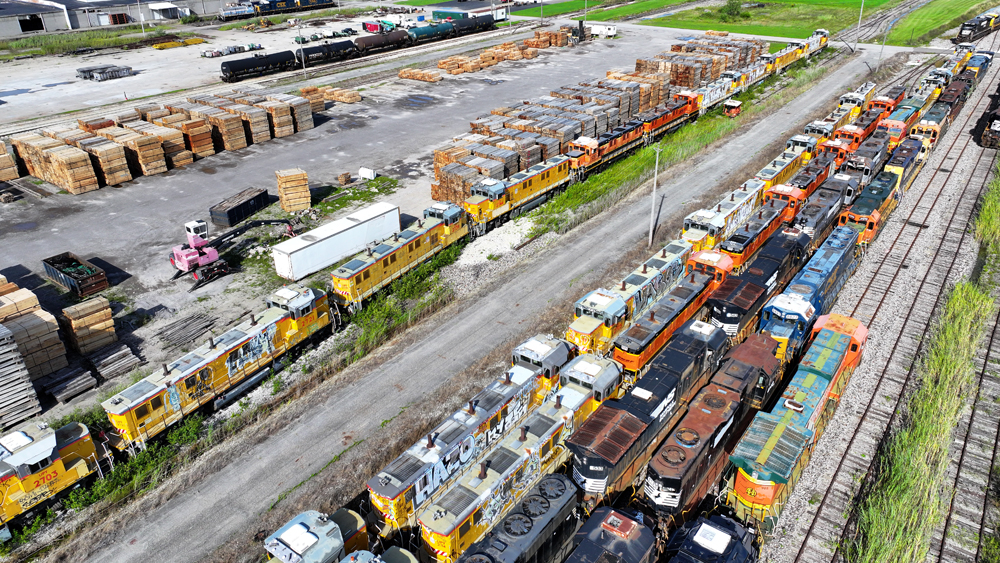A primary selling point

At the time, gensets seemed like a good idea. Efficient, small, and imminently capable, they would be able to do everything an industrial switcher or small road unit could, but while using less fuel and producing fewer emissions. In environmentally conscious areas, and those with legitimately bad air quality, anything that could reduce carbon dioxide and nitrous oxide emissions was welcomed by local governments.
Government grants were handed out in many areas to subsidize the purchase of new locomotives, and railroads started tendering orders to a bevy of manufacturers. National Rail Equipment, Progress Rail, Brookville, Railpower, and even MPI all started churning out these funny-looking little switchers in huge numbers.
Features varied from units that simply put out fewer emissions to locomotives with multiple prime movers and even a diesel/battery hybrid creation from Railpower. Gensets ranged from new units and repowers of existing locomotives to old diesels stripped down to the frame and rebuilt anew.
On the Class I railroads, Union Pacific and BNSF were the biggest takers, rostering over a hundred each, from a variety of builders. Norfolk Southern took delivery of a handful, but also built its own prototypes in-house. Smaller takers included Kansas City Southern, Amtrak, CSX, and Canadian Pacific, who each rostered less than 30. Canadian National took on none.
Smaller operators were also swayed by increased efficiency and government grants, and made purchases that, while smaller in number, were significant percentages of their fleets. The California Northern made an attempt at replacing its entire fleet of 12 locomotives with five NRE 3GS21Bs; the Dallas, Garland & Northeastern purchased a 12-strong fleet of both four- and six-axle units, and even the U.S. military waded into the fray, coming up with a dozen locomotives from various manufacturers.
An unfortunate truth

Then the gensets came to work, and the trappings of technological progress ran up against the harsh realities of modern railroading.
Overly complex, with multiple prime movers, heavy battery banks, and sophisticated auto-start/stop systems, the locomotives quickly proved unreliable in day-to-day service. One of the many accolades of the EMD GP9 was its supposed ability to run while “two-thirds broke;” on many gensets, that was a quantifiable reality, as locomotives would be forced to struggle on with one or two of their multiple prime movers completely offline.
This infamous unreliability soon soured the major railroads on the units’ technology. The hundreds that had been snapped up in the heady days of the “Genset Revolution” soon found themselves relegated to storage tracks and dead lines, while the GP and SW series locomotives they were supposed to replace continued soldiering on.
The California Northern, as one example, found its gensets so unreliable that it was forced to bring on an equal number of 1976-built EMD GP15-1s as backup power. On the DGNO, one locomotive — RailPower RP20BD No. 143 — was so thoroughly unreliable and disliked by crews that when it eventually caught fire, a quick-thinking employee directed local firefighters to point their hoses into the locomotive’s generator compartment, rendering the engine a total loss in seconds.
Some railroads, mainly those who had purchased them through government assistance (clean-air grants), continue operating them out of a contractual obligation. Others, including the Class I lines, have quickly disposed of them, relegating them to out of the way sidings or scrapping them on property.
Where have all the gensets gone?

A decade or more after their introductions, the gensets are a dying breed. Most railroads have shuffled them off into lease fleets if they can find one to take them. Those railroads that do continue to use them generally run them in pairs to maximize the units’ ability to continue running after a breakdown. Others run them with conventional units for the same reason. The Indiana Harbor Belt is apparently turning some of its gensets into yard slugs.
Given their continued unreliability, it is perhaps fortunate that the vast majority of these engines have gone off to scrap. Their metal and wiring is still valuable, and those few roads still running them will need spare parts sooner rather than later. Scrapyards as far away as Ohio have been taking these unwanted locomotives in by the dozen, especially from the huge rosters of Union Pacific and BNSF.
Soon, the genset may be nothing more than an unpleasant memory, with just a few preserved units left to warn us about their many failings.
To read more about genset locomotives, “The controversial Genset locomotive.”














I spotted a string of these Gensets in UP’s Butler WI yard late in 2022 and was quite surprised to see them. Now I know why they were there, although I’m not sure where they went since then… perhaps scrapped?
https://flickr.com/photos/rugbyjunction/52482968560/in/dateposted/
Could the gender unit be converted to semi stationary use such as backup power in a industrial rail service area. Though I presume Trailer mounted generators such as CAT would be less expensive. Just curious.
Should have read Generator unit . At least recover the 3 Cummings diesels
Well, Dan…at least you can’t be accused of “misgendering” them. And do we know what gender they were? Or are they “non-binary”?
Just messing with ya….
In 2007 at the UP Mira Loma in California, I worked as a conductor at the auto facility. We had at least three Tri-power gensets.
The first problem was they were short on power. The locomotive had three diesel engines with all three on line when you needed maximum power. Well, this was 100% of the time. So, I didn’t see any fuel savings there. Also, with all three engines roaring, you had difficulty hearing the engineer on the radio as a conductor rode the front steps.
Next came the lack of reliability. At least once a week something would overheat inside the cab electrical panel. One day, I came to work to see a genset parked at the end of one of our tracks, it had caught fire.
Too bad they couldn’t fix the problems.
The big railroads now run DPU’s all the time (distributed power units) and modern locomotives have sophisticated systems that can manage an entire train over its entire route almost driving itself without an engineer – in Australia they run without at crew – autonomously. But gensets are beyond our capabilities – getting two or three engines to work together in a locomotive is “impossible”.
In many cases, new design locos often have “teething” problems and challenges that are resolved over time. EMD SD50s faced that but finally improved. The 6,000 HP locos from EMD and GE never fully succeeded and are now gone. I hope that the few surviving gensets have at least improved somewhat from the earliest days as technicians learned their quirks. Any of these been acquired yet by museums or preservation groups? If not, they better move before all are scrapped.